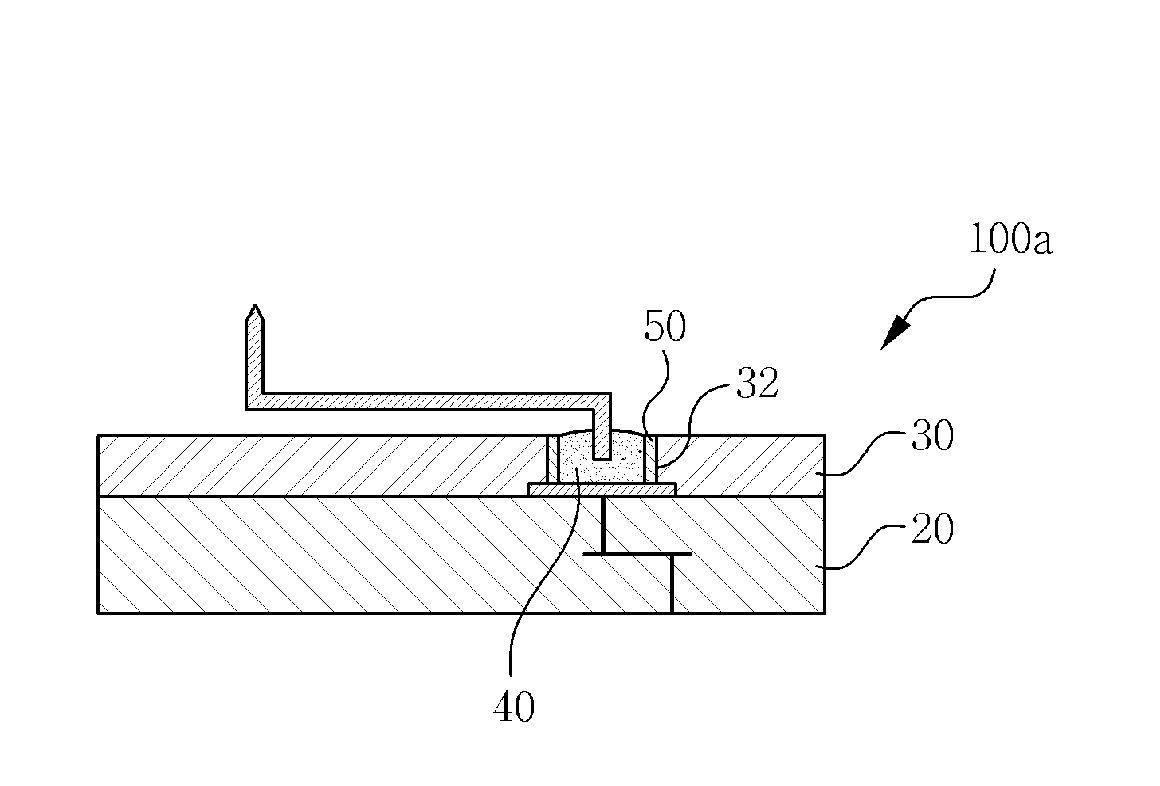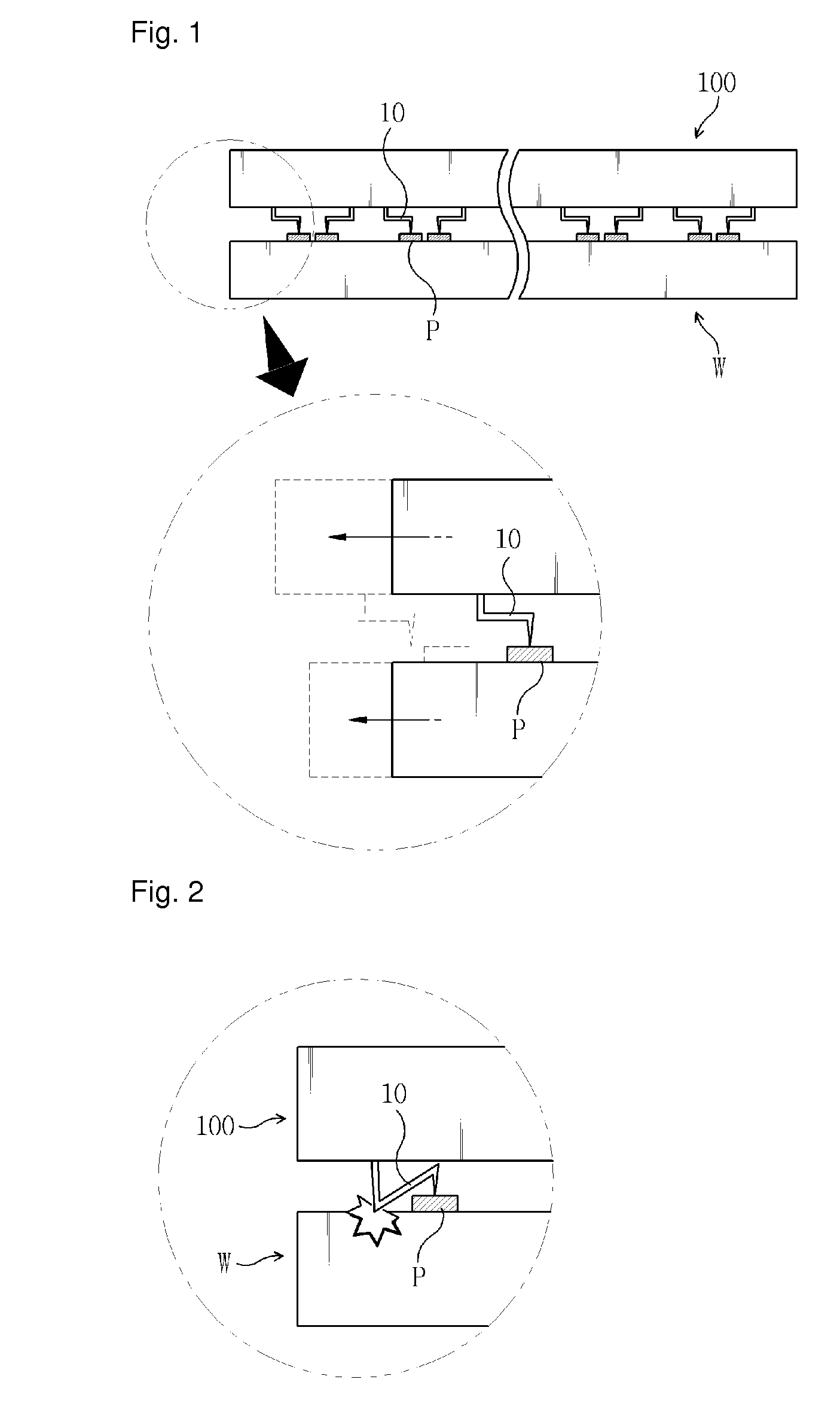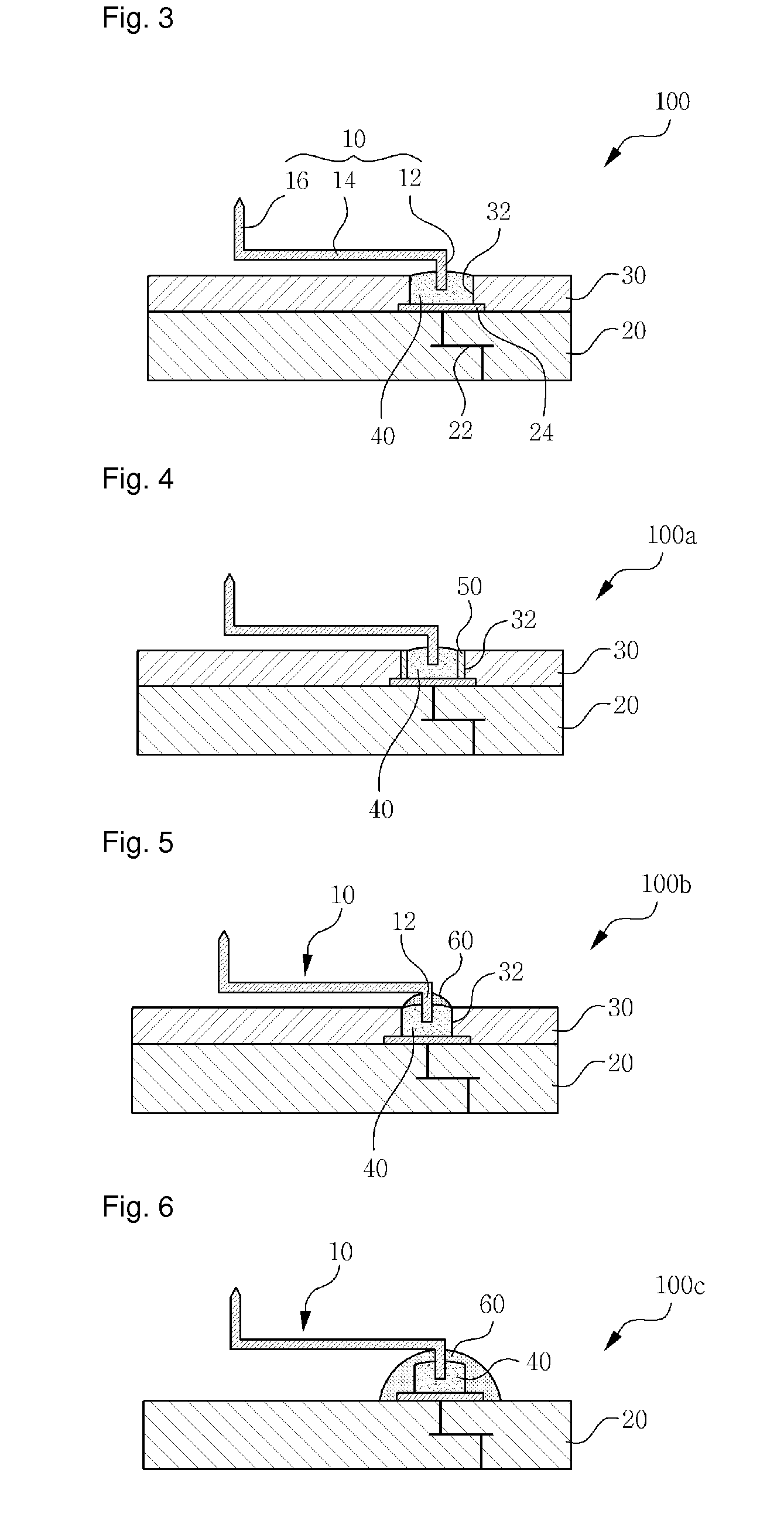Probe assembly and manufacturing method thereof
a technology of probe pins and assembly methods, applied in the direction of electronic circuit testing, measurement devices, instruments, etc., can solve the problems of difficult to precisely dispose of pins with a high level of coplanarity, difficult to arrange the probe pins without electrical and mechanical interference between adjacent pins, and high cost, so as to achieve convenient and reliable disposed, easy to arrange, and small pitch
- Summary
- Abstract
- Description
- Claims
- Application Information
AI Technical Summary
Benefits of technology
Problems solved by technology
Method used
Image
Examples
1st embodiment
Probe Assembly
[0069]FIG. 3 is a cross-sectional view showing a probe assembly in accordance with a first embodiment of the present invention. Referring to FIG. 3, the probe assembly 100 is composed of probe pins 10, a circuit board 20, a base layer 30, and a conductive adhesive 40.
[0070]The circuit board 20, which is a printed circuit board (PCB) or a ceramic substrate, has a circuit pattern 22 formed therein and a plurality of pads 24 thereon. The circuit pattern 22, single-layered or multi-layered, is electrically connected to the pads 24 through via. The top surface of the circuit board 20 is covered with an insulating protective layer (not shown). The pads 24 are arranged with small pitch of several tens of micrometers throughout the top surface of the circuit board 20 without being covered with the protective layer. In general the circuit board 20 is combined with an interface board (not shown) of the probe card and electrically connected to a tester (not shown) through the int...
2nd embodiment
Probe Assembly
[0076]A probe assembly 100a shown in FIG. 4 is a case where a plating layer 50 is formed on sidewalls of the insertion hole 32 of the base layer 30.
[0077]The plating layer 50 in the insertion hole 32 may enhance the adhesive strength between the base layer 30 and the conductive adhesive 40. For that reason, the plating layer 50 may employ a material, such as gold, that has a good adhesive property with the conductive adhesive 40.
3rd embodiment
Probe Assembly
[0078]A probe assembly 100b shown in FIG. 5 is a case where a supporting agent 60 is used in addition to the conductive adhesive 40.
[0079]During a test, the probe pin 10 undergoes repeated mechanical contacts with the terminal of a target device. Therefore, due to fatigue stress, some of the probe pins 10 may deviate from an original position, fall down, or become deformed. In order to prevent such unfavorable results, the probe pins 10 should be firmly supported in the insertion holes 32 of the base layer 30. Of course, as discussed before, the conductive adhesive 40 that fully encloses the probe pin 10 in the insertion hole 32 can sufficiently support the probe pin 10. However, to maximize a supporting strength to the probe pin 10, the supporting agent 60 may be additionally used. The supporting agent 60 is formed on the conductive adhesive 40 and encloses the connectable root 12 of the probe pin 10, thus providing an additional supporting strength. Since the support...
PUM
 Login to View More
Login to View More Abstract
Description
Claims
Application Information
 Login to View More
Login to View More - R&D
- Intellectual Property
- Life Sciences
- Materials
- Tech Scout
- Unparalleled Data Quality
- Higher Quality Content
- 60% Fewer Hallucinations
Browse by: Latest US Patents, China's latest patents, Technical Efficacy Thesaurus, Application Domain, Technology Topic, Popular Technical Reports.
© 2025 PatSnap. All rights reserved.Legal|Privacy policy|Modern Slavery Act Transparency Statement|Sitemap|About US| Contact US: help@patsnap.com



